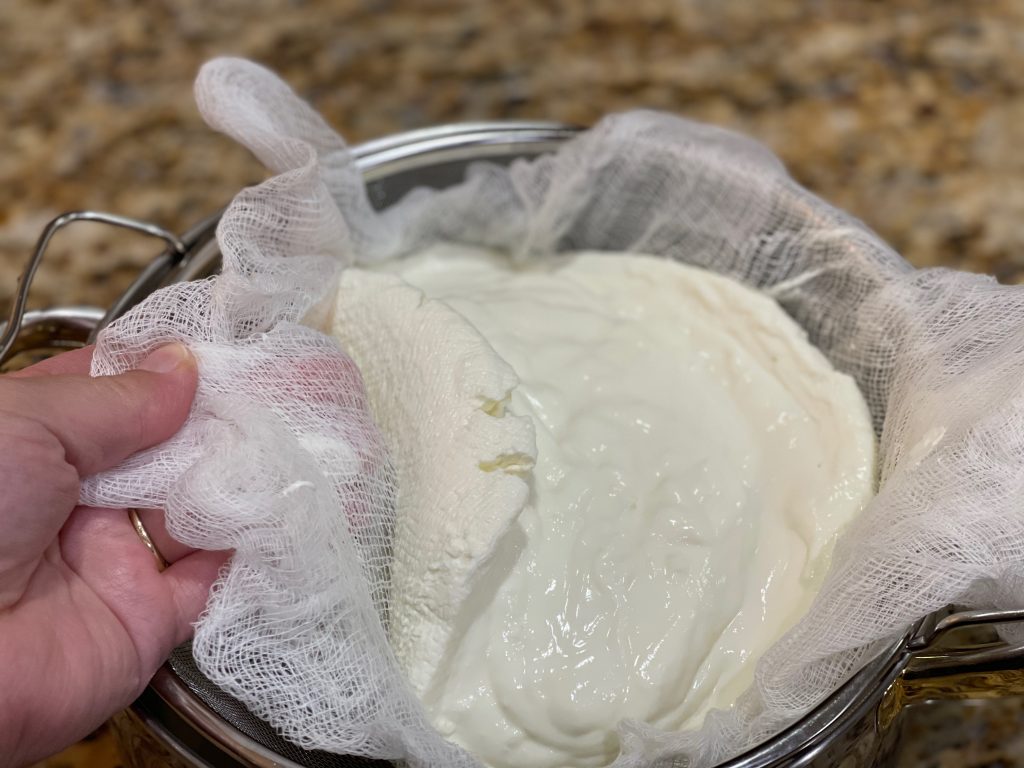All products featured on Domestic Gourmet are independently selected. I may earn an affiliate commission when you buy through links on this site.
Yes, it is possible to make homemade Greek yogurt on your stovetop! Electronic pressure cookers can do it for you with the push of a button, but if you don’t have one, it can easily be accomplished with an enameled cast iron pot known as a Dutch oven. Don’t have a Dutch oven? Just use your heaviest 10″ pot.
Although this recipe is for plain Greek yogurt, you can sweeten or flavor the final product however you like! Add in vanilla extract, honey, and homemade preserves for a sweeter variety; mint and dill for a savory Meditteranean dip; the options are endless.
What I love about recipes such as this one is that it’s a no-waste project. The whey byproduct can marinate chicken, make soups and smoothies, and substitute water in many baking and cooking recipes. The yogurt can also be used for breakfast, cooking, sauces, smoothies, and baking! Having this in your fridge will become a staple you didn’t know you needed.
iBuen provecho!

Homemade Greek Yogurt
Equipment
Ingredients
- 2 qt Whole milk preferably Organic grass-fed milk will result in a more neon whey byproduct, as pictured above.
- ½ cup Heavy cream Recommended if you use skim or 1% milk, otherwise, it's not needed when using whole milk.
- 4 tbsp yogurt with live active cultures
Instructions
- In a Dutch oven over medium heat add whole milk or milk of your choice and cream .
- Stir occasionally until the milk reaches 180 degrees.
- Remove from heat and let cool until the milk reaches 120 degrees.
- In a separate bowl, mix ½ cup of warm milk with the live yogurt and add the mixture back to the Dutch oven.
- Let the pot sit for 12 hours in a warm spot. Ideally, your oven with the light turned on.
- Place the fine mesh strainer inside of a large mixing bowl and line with a couple of layers of cheesecloth.
- Pour your thickened yogurt into the cheesecloth-lined strainer and set it in the refrigerator to cool for 4-6 hours, checking after 4 hours to see if it has reached your desired thickness.

- For thicker yogurt: Let it continue to sit and drain in the fridge.

- If the yogurt is too thick: add back in some of the whey. The whey is the liquid that drained into the mixing bowl.

- Uses for the whey byproduct: a water substitute when boiling pasta, potatoes, rice, baking bread and muffins, smoothies, or soups.

Notes
Did you make this recipe?
Please let me know how it turned out for you! Leave a comment below, tag @domesticgourmet on Instagram, and hashtag #domesticgourmet.
